
Are you planning an adventure to Mt. St. Helens? Before you set off on your journey, it's important to make sure you have all the essential items packed. Whether you're hiking to the summit, exploring the surrounding trails, or camping overnight, being prepared is key to a successful and enjoyable adventure. From sturdy hiking boots and warm clothing to a map and compass, this guide will walk you through the must-have items to bring with you to make the most of your Mt. St. Helens adventure. So grab your backpack and get ready to conquer the wilderness!
What You'll Learn
- What clothing should I pack for a trip to Mount St. Helens?
- What kind of footwear is appropriate for hiking at Mount St. Helens?
- Are there any specific items I should bring for safety while visiting Mount St. Helens?
- Can I bring a camera to Mount St. Helens, and if so, what type is recommended?
- Are there any specific supplies or equipment I should pack for camping at Mount St. Helens?

What clothing should I pack for a trip to Mount St. Helens?
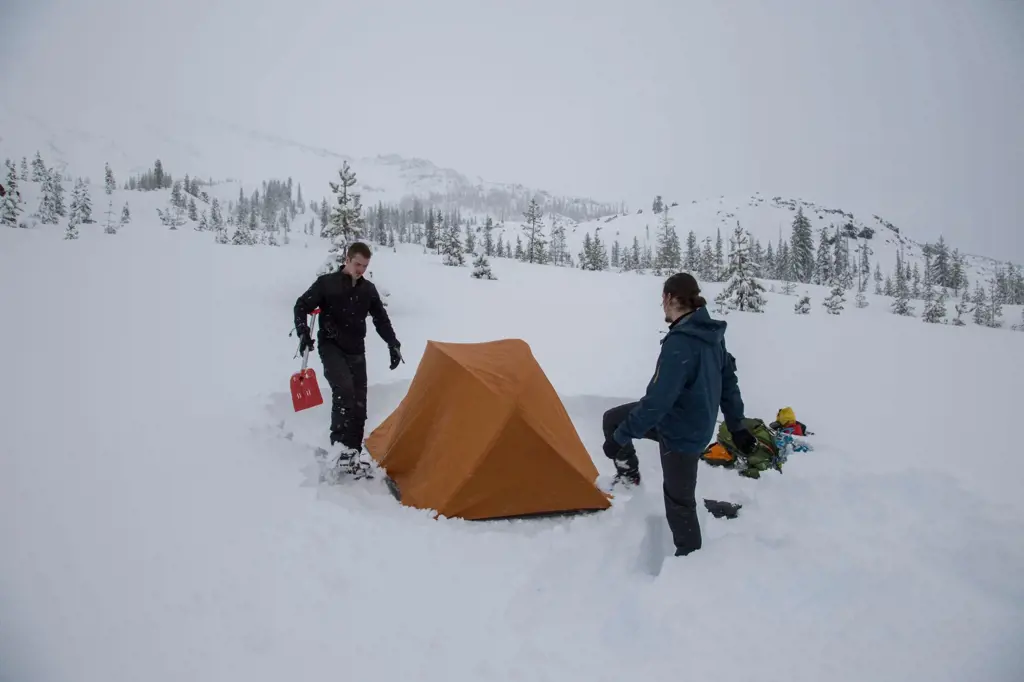
If you're planning a trip to Mount St. Helens, it's important to pack the right clothing to ensure your comfort and safety. Mount St. Helens is an active volcano located in Washington state, and the weather conditions can vary greatly depending on the season and elevation. Whether you're planning to hike to the summit or explore the surrounding area, here are some clothing items you should pack for your trip.
- Layered Clothing: Mount St. Helens is known for its unpredictable weather, so it's important to dress in layers. Start with a moisture-wicking base layer, such as a synthetic or wool shirt, to keep you dry and warm. A lightweight fleece or down jacket can be a good mid-layer to provide insulation. Finally, a waterproof and windproof outer layer, like a rain jacket or shell, will protect you from the elements.
- Sturdy Hiking Boots: The terrain around Mount St. Helens can be rugged and uneven, so it's essential to wear sturdy hiking boots with good ankle support. Look for boots with a grippy sole to provide traction on slippery surfaces. It's also a good idea to break in your boots before your trip to avoid blisters and discomfort.
- Hiking Pants: Opt for lightweight, quick-drying hiking pants that allow for ease of movement. Look for pants with zip-off legs or adjustable hems, so you can easily adapt to changing weather conditions. Avoid wearing jeans or cotton pants, as they retain moisture and can become heavy and uncomfortable when wet.
- Moisture-Wicking Socks: Invest in a few pairs of moisture-wicking socks, preferably made of merino wool or synthetic materials. These socks will help keep your feet dry and prevent blisters, even if you encounter wet or snowy conditions during your hike. Carry extra pairs of socks in your backpack, in case your feet get wet along the way.
- Hat and Gloves: Protect your head and hands from the cold and sun by wearing a hat and gloves. A lightweight beanie or sun hat will shield your head from the sun's rays and keep you warm in cooler temperatures. Gloves with good insulation and grip will not only protect your hands but also help with dexterity while traversing rocky terrain.
- Sunglasses and Sunscreen: Mount St. Helens is known for its sunny days, so don't forget to pack sunglasses and sunscreen. Choose sunglasses that offer UV protection and are polarized if possible. Apply a broad-spectrum sunscreen with a high SPF to exposed skin, including your face and neck, to protect against the sun's harmful rays.
- Backpack: Lastly, make sure to have a suitable backpack to carry your essential items during your trip. Look for a backpack with a hydration system or bring a water bottle to stay hydrated throughout your hike. It should also have enough space to carry extra clothing layers, snacks, a map, a compass, and any other necessary gear.
Remember to check the weather forecast before your trip and adapt your clothing accordingly. Conditions can change rapidly on the mountain, so it's always better to be prepared for any situation. By packing the right clothing, you'll be able to fully enjoy your trip to Mount St. Helens and stay comfortable and safe throughout your adventure.
Preparing for a Magical Trip: What to Pack for Disneyland in February
You may want to see also

What kind of footwear is appropriate for hiking at Mount St. Helens?
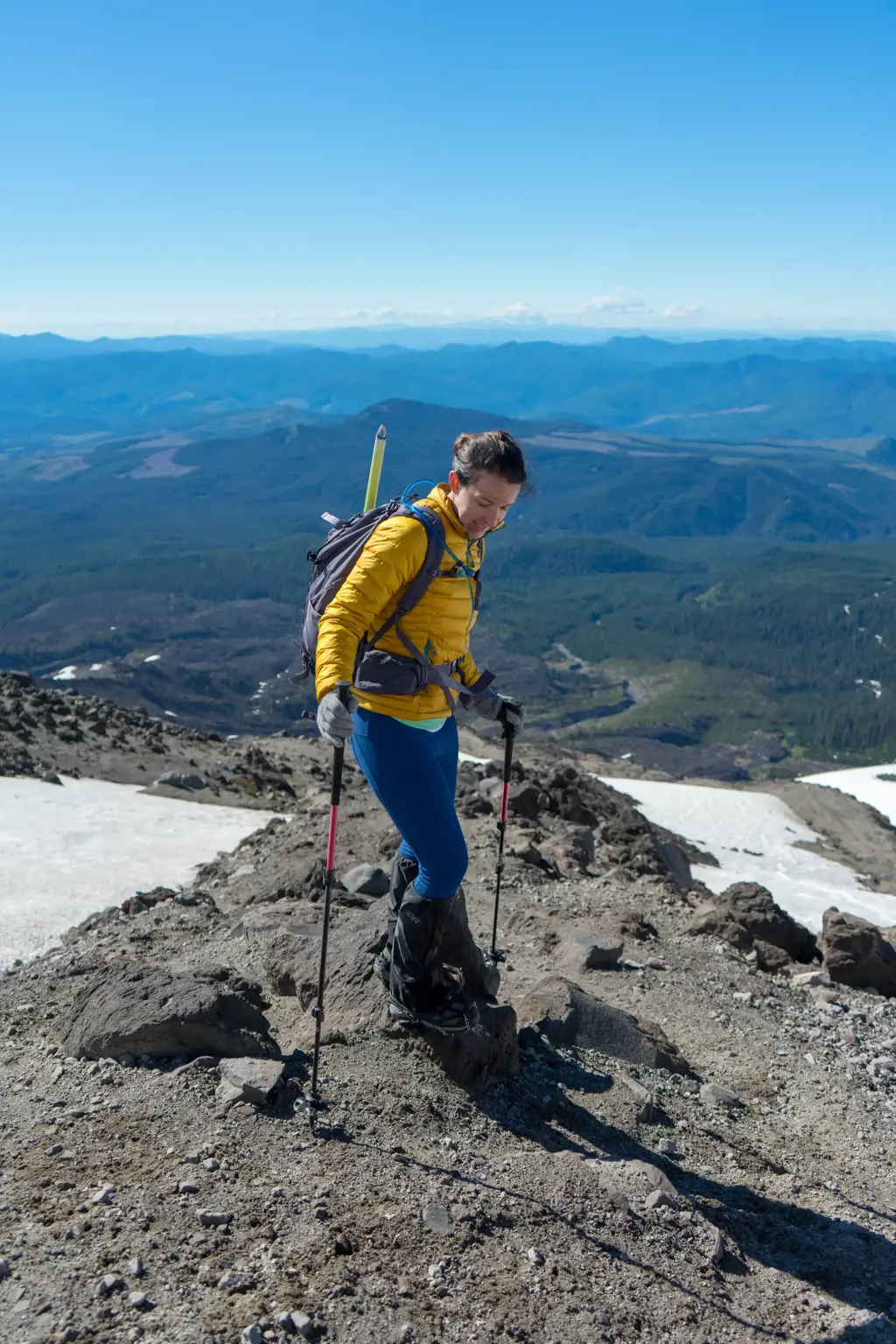
Hiking at Mount St. Helens is a popular activity for outdoor enthusiasts, but it's important to come prepared, especially when it comes to your footwear. The right shoes can make all the difference in keeping you comfortable and safe throughout your hike. So, what kind of footwear is appropriate for hiking at Mount St. Helens?
Sturdy Hiking Boots:
When it comes to hiking at Mount St. Helens, sturdy hiking boots are a must. The terrain can be rugged and varied, with rocky, uneven surfaces, loose gravel, and steep inclines. Sturdy hiking boots provide ankle support, protecting you from twists and sprains, while also providing traction on slippery surfaces. Look for boots that are waterproof and breathable to keep your feet dry and comfortable throughout your hike.
Traction:
As mentioned earlier, Mount St. Helens has a variety of terrains, including loose gravel and rocky surfaces. To navigate these terrains safely, it's important to have shoes with good traction. Look for hiking boots or shoes with deep treads or a sticky rubber outsole to provide excellent grip on different surfaces. This will prevent slips and falls and give you more confidence on your hike.
Comfort and Fit:
Comfort is key when it comes to hiking footwear. Make sure your shoes fit well and have enough cushioning to support your feet during long hikes. It's advisable to wear thick hiking socks to prevent blisters and add additional cushioning and support. Before heading out, take the time to break in your new shoes to avoid discomfort or blisters on the trail.
Protection:
Hiking at Mount St. Helens means being prepared for various weather conditions, including rain, wind, and even snow. Choose shoes that offer protection from the elements. Waterproof materials such as Gore-Tex will keep your feet dry, while sturdy uppers will protect them from debris and sharp rocks. Some hiking shoes and boots also come with toe caps for added protection.
Weight:
While it's important to have sturdy and protective footwear, it's also essential to consider the weight of your shoes. Heavy boots can weigh you down, making your hike more challenging and tiring. Look for lightweight options that still provide the necessary support and protection. This will allow for more agility and ease while hiking.
In conclusion, when it comes to hiking at Mount St. Helens, choosing the right footwear is crucial for a successful and enjoyable experience. Sturdy hiking boots with good traction, comfort, and protection are the most appropriate choice. Remember to break in your shoes before the hike and wear thick socks for added comfort. By choosing the right footwear, you'll be well-prepared to tackle the diverse terrains of Mount St. Helens and have a safe and enjoyable hike.
Essential Items for an International Carry-On: A Comprehensive Guide
You may want to see also

Are there any specific items I should bring for safety while visiting Mount St. Helens?
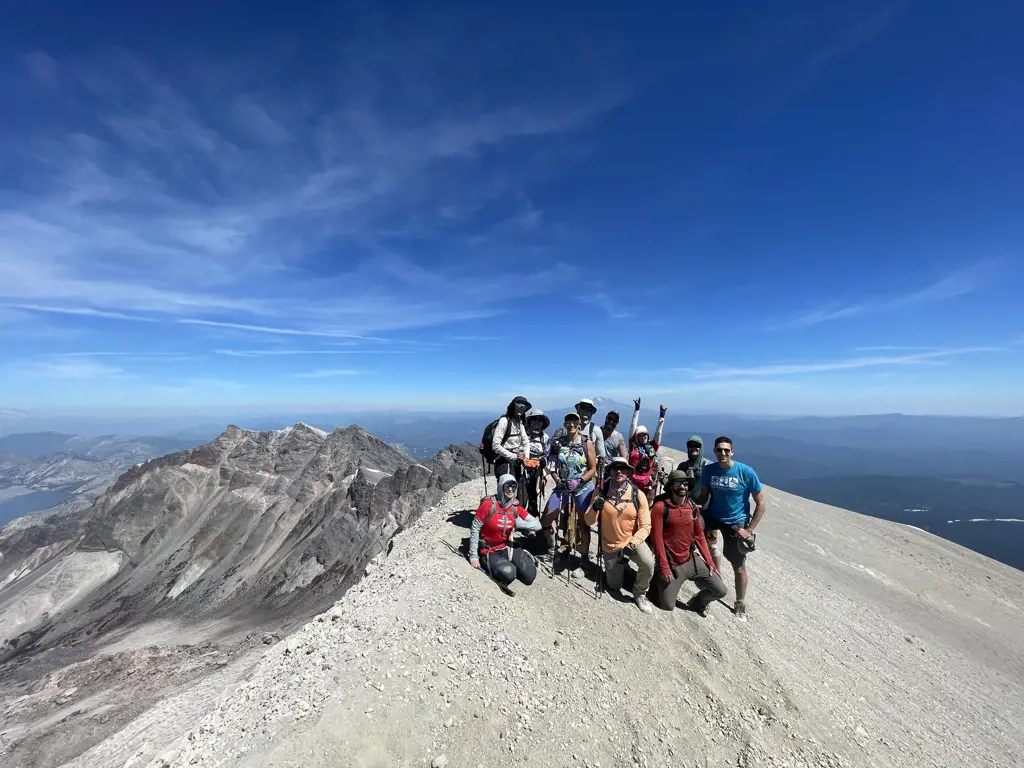
When visiting Mount St. Helens, it's essential to prioritize safety. The volcano is known for its unpredictable nature, and being prepared can make a significant difference in case of an emergency. Here are some specific items you should bring for safety while visiting Mount St. Helens.
Protective Clothing:
Wearing appropriate clothing is crucial in the volatile environment of Mount St. Helens. Be sure to pack sturdy hiking boots with ankle support to protect your feet and prevent injuries on uneven terrain. Additionally, dress in layers to adjust to the changing weather conditions, which can vary drastically at different elevations.
Navigation Tools:
To ensure you stay on the right path and avoid getting lost, bring a reliable map of the area and a compass. Familiarize yourself with the topography and trails before setting out. It's also helpful to have a GPS device or a smartphone with offline maps as a backup.
First Aid Kit:
Accidents and injuries can happen in any outdoor environment. Carry a small first aid kit with essentials such as adhesive bandages, gauze pads, antiseptic wipes, tweezers, and pain relievers. Having these supplies on hand can be invaluable in treating minor injuries while waiting for professional help, if needed.
Sun Protection:
Mount St. Helens is often sunny, and the higher elevation can intensify the sun's rays. Protect your skin by wearing a hat, sunglasses, and applying a high SPF sunscreen on exposed areas. A sunburn can be not only discomforting but also dangerous in the long run.
Extra Food and Water:
Pack enough food and water to sustain yourself for a longer period than initially planned. Nourishing snacks such as energy bars, nuts, and dried fruits can provide a quick boost of energy while on the trail. A good rule of thumb is to bring at least one extra day's worth of food and water in case of unexpected circumstances.
Emergency Shelter:
Carrying a lightweight emergency shelter in your backpack can be a lifesaver if you find yourself stranded or caught in inclement weather. A compact, waterproof tent or a bivvy sack can provide temporary shelter and protect you from the elements until help arrives.
Communication:
Ensure you have a reliable means of communication, such as a fully charged cell phone or a two-way radio. However, keep in mind that there may be areas with limited or no cell coverage. It's wise to inform someone of your travel plans and estimated return time, so they can alert authorities if you're overdue.
Remember, Mount St. Helens is a dynamic volcanic landscape, and conditions can change rapidly. Stay informed about any advisories or warnings issued by the authorities and adhere to their guidelines. By bringing these essential items, you'll be better prepared to enjoy your visit while keeping safety a priority.
Essential Items to Pack for Your Trip to the Dominican Republic
You may want to see also

Can I bring a camera to Mount St. Helens, and if so, what type is recommended?
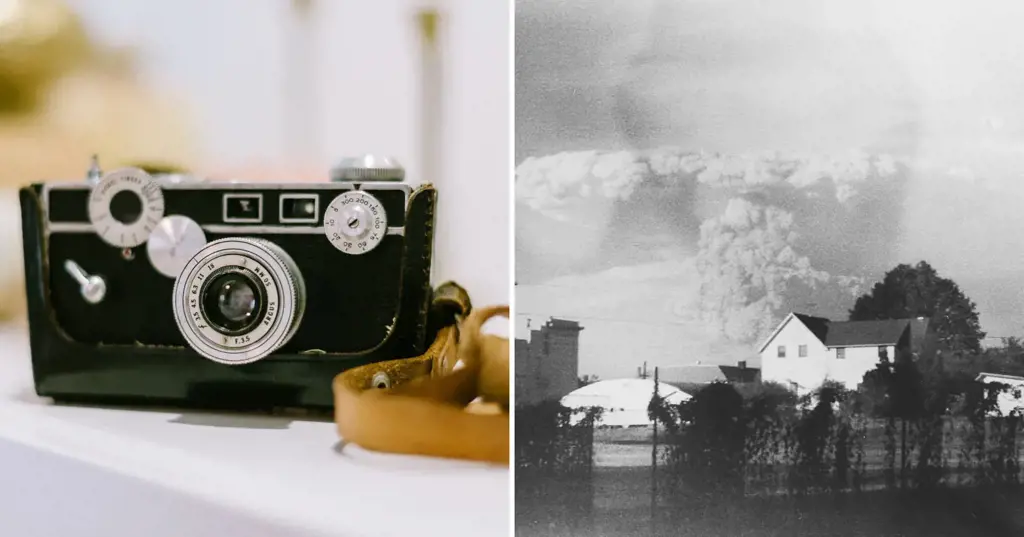
Planning a trip to Mount St. Helens? Don't forget to pack your camera! The stunning scenery and remarkable volcanic landscape offer countless opportunities for capturing breathtaking photos. But before you snap away, it's essential to understand the guidelines and select the right camera for the job.
Can I bring a camera to Mount St. Helens?
Absolutely! It is permitted to bring a camera when visiting Mount St. Helens. In fact, Mount St. Helens is a paradise for photographers of all levels. From the dense forests to the crater rim, there are photo-worthy moments at every turn. So, be sure to charge your batteries and clear space on your memory card for the adventure!
The type of camera you choose depends on your skill level, budget, and personal preferences. Here are a few options to consider:
- Digital Single Lens Reflex (DSLR) Camera: If you are passionate about photography and want more control over your shots, a DSLR camera is an excellent choice. With interchangeable lenses, manual settings, and a larger sensor, DSLRs capture highly detailed images. This type of camera allows you to experiment with different lenses, such as wide-angle lenses for capturing sweeping landscapes or telephoto lenses for zooming in on wildlife.
- Mirrorless Camera: Mirrorless cameras offer similar features to DSLRs but in a smaller and more compact package. They are a great option if you prioritize portability without compromising image quality. Many mirrorless cameras also have interchangeable lenses, making them versatile for various shooting situations.
- Point-and-Shoot Camera: If photography is more of a casual hobby for you, a point-and-shoot camera can still deliver satisfactory results. These compact cameras have fixed lenses and automatic settings, making them easy to use. While they may not offer as much control as a DSLR or mirrorless camera, point-and-shoot cameras are convenient and portable.
- Smartphone Camera: In recent years, smartphone cameras have become incredibly advanced and can produce stunning photos. If you don't want to invest in a separate camera, using your smartphone can be a convenient option. Many smartphones have excellent image stabilization, manual controls, and even multiple lenses for different perspectives.
Tips for capturing great photos at Mount St. Helens:
- Research the area: Before your visit, research the best photo spots in Mount St. Helens. Look for viewpoints, trails, or landmarks that offer unique perspectives and compositions. Discovering the best angles and light conditions will help you take more impactful photos.
- Bring a tripod: Mount St. Helens is known for its unpredictable weather, including gusty winds. Carrying a lightweight tripod will help stabilize your camera during longer exposures or in challenging weather conditions. It's especially useful for capturing landscapes in low light or creating stunning water-motion shots.
- Pack the right lenses: Depending on your camera system, bring the appropriate lenses for the kind of photography you hope to capture. Wide-angle lenses are perfect for expansive landscapes, while telephoto lenses can bring distant subjects closer, such as wildlife or the mountain's crater.
- Consider filters: Adding filters to your lens can significantly enhance your photos. A polarizing filter helps reduce glare and increase the saturation of colors, making the landscape appear more vibrant. A neutral density (ND) filter allows for longer exposures, useful for capturing the movement of water or clouds.
- Timing is key: The lighting conditions at Mount St. Helens can dramatically affect the mood and quality of your photographs. Plan your visit during the golden hours, just after sunrise or before sunset, when the lighting is soft and golden. This time of day often creates more compelling and atmospheric shots.
Remember to always respect the park's rules and regulations, staying on designated trails and leaving no trace behind. By following these guidelines and selecting the right camera setup, you'll be well-equipped to capture stunning photos of Mount St. Helens and create lasting memories of your visit.
Essential Items to Include in Your Childcare Singapore Packing List
You may want to see also

Are there any specific supplies or equipment I should pack for camping at Mount St. Helens?
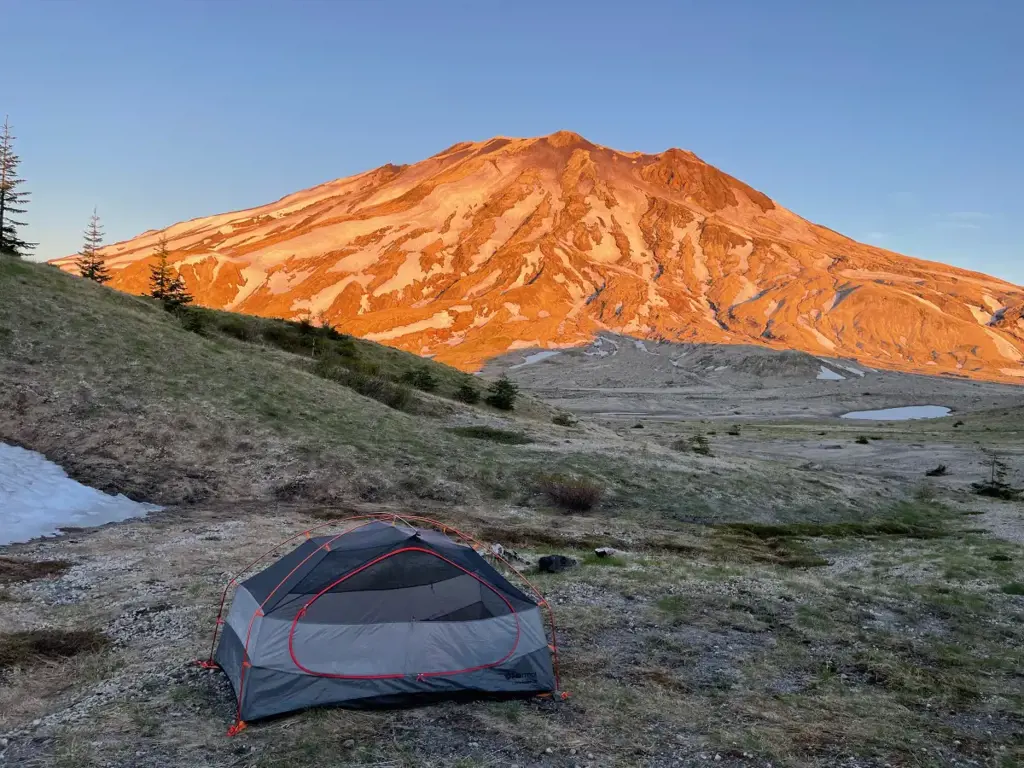
When planning a camping trip to Mount St. Helens, it is important to be well-prepared with the right supplies and equipment. This active volcano located in Washington State offers stunning natural beauty and diverse outdoor activities, but it also presents potential hazards that should be taken into consideration. Here are some specific supplies and equipment you should pack for a safe and enjoyable camping experience at Mount St. Helens.
- Sturdy Tent: A durable and weatherproof tent is essential when camping at Mount St. Helens. The weather in this region can be unpredictable, with sudden changes in temperature and strong winds. Look for a tent that is specifically designed for windy conditions and is made from high-quality materials to withstand any weather conditions you may encounter.
- Sleeping Bags and Sleeping Pads: A good sleeping bag and sleeping pad are essential for getting a comfortable night's sleep in the wilderness. Mount St. Helens can get cold at night, so choose a sleeping bag that is suitable for the expected temperature range during your camping trip. A sleeping pad will provide insulation from the cold ground and add an extra layer of comfort.
- Cooking Equipment: Depending on the area where you plan to camp, you may need to bring your own cooking equipment. Some campgrounds provide fire pits or grills, but it's always a good idea to have a backup cooking stove or a portable grill in case the provided facilities are not available or suitable for your needs. Make sure to bring enough fuel or charcoal for cooking.
- Water Filter or Purification Tablets: While there may be water sources available in the Mount St. Helens area, it's important to have a reliable way to purify the water before drinking it. A water filter or water purification tablets can remove harmful bacteria and parasites, ensuring that you have safe drinking water during your camping trip.
- Hiking Gear: Mount St. Helens offers numerous hiking trails that range from moderate to challenging. Make sure to pack appropriate hiking gear, including sturdy hiking boots, comfortable clothing, backpacks, and trekking poles if needed. Additionally, bring a map, compass, or GPS device to navigate your way through the trails.
- First Aid Kit: Accidents can happen even in the most carefully planned camping trips. It's important to have a well-stocked first aid kit that includes basic medical supplies such as bandages, antiseptic ointments, painkillers, and any specific medication you may need. Additionally, it's a good idea to carry a first aid manual or have some basic knowledge of first aid procedures.
- Insect Repellent and Sunscreen: Insect repellent is essential to protect yourself from mosquitoes, flies, and other biting insects that are common in the Mount St. Helens area. Similarly, sunscreen is important to protect your skin from the strong UV rays, especially if you plan to spend a lot of time outdoors. Choose insect repellent with DEET for maximum effectiveness and a broad-spectrum sunscreen with at least SPF 30.
- Emergency Supplies: It is always wise to be prepared for emergencies. Pack a flashlight with extra batteries, a whistle for signaling, waterproof matches, a multi-tool, a small tarp or emergency blanket, and a portable phone charger. These items can come in handy in case of unexpected situations or if you find yourself in need of immediate assistance.
Remember to check the specific regulations and guidelines for camping at Mount St. Helens before your trip. By being well-prepared with the right supplies and equipment, you can ensure a safe and enjoyable camping experience while exploring the breathtaking beauty of this iconic volcano.
Essential Packing Guide for Center Parcs with a Baby
You may want to see also
Frequently asked questions
When hiking Mt St Helens, it's important to be prepared for different weather and trail conditions. Here are a few essential items to pack:
- Plenty of water and snacks to keep you hydrated and energized during the hike.
- Layered clothing to adapt to changing weather conditions. It can be hot at the base but colder and windier at higher elevations.
- Sturdy hiking boots to provide ankle support and traction on rocky and uneven terrain.
- A backpack to carry your essentials, such as a map, compass, first aid kit, sunscreen, insect repellent, and any personal medications you may need.
- A headlamp or flashlight in case you're hiking in low light conditions or need to see in a darker area, such as caves.
- Trekking poles for added stability, especially during steep or challenging sections of the trail.
- A hat, sunglasses, and sunscreen to protect yourself from the sun's rays at higher elevations.
- A camera to capture the breathtaking views and memories of your Mt St Helens adventure.
While you don't need any specialized mountaineering gear for hiking Mt St Helens, it's important to have a few key items. These include:
- A permit, as all hikers must obtain a permit to hike above the 4,800-foot elevation mark on Mt St Helens. Permits can be obtained through an online lottery system or through a guided tour operator.
- Microspikes or crampons may be necessary if there is ice or packed snow on the trail. It's important to check the current trail conditions and weather forecast before your hike.
- Gaiters can help keep debris out of your boots and protect your legs from scratches and scrapes.
- A lightweight, waterproof rain jacket and pants to protect you from rain or snowfall.
- A warm hat and gloves to protect yourself from cold temperatures at higher elevations.
- A emergency whistle and a space blanket for safety purposes.
- If you plan to hike during the winter months or on a longer overnight trip, additional gear such as a tent, sleeping bag, and cooking equipment may be required. It's always best to consult with experienced hikers or park officials for specific gear recommendations.
Yes, it is possible to hike Mt St Helens without a guide. However, it's important to be prepared and have the necessary skills and experience for the hike. The hike to the summit of Mt St Helens is a challenging and strenuous endeavor, requiring physical fitness and the ability to navigate difficult and changing trail conditions.
Before attempting the hike, be sure to:
- Familiarize yourself with the route and trail map. Carry a compass and know how to use it.
- Check the weather forecast and trail conditions. Be aware that adverse weather can quickly develop at higher elevations.
- Have basic wilderness survival skills and carry essential gear like a first aid kit, map, compass, and emergency supplies.
- Notify someone of your hiking plans, including your intended route and estimated return time.
- Understand and adhere to all regulations and permit requirements for hiking Mt St Helens.
- Be aware of your limits and turn back if conditions become dangerous or if you feel physically or mentally uncomfortable.
It's worth noting that guided hikes do offer the benefit of having an experienced guide who can provide additional safety measures, knowledge, and support.







